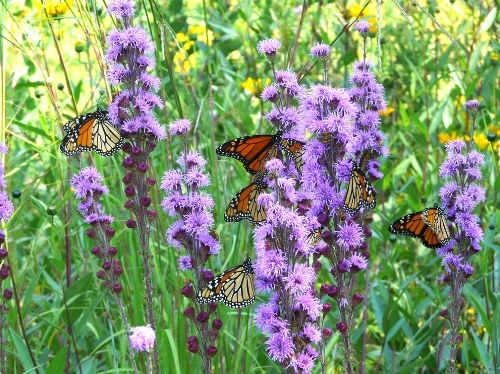Gardening is for the Birds
- Kansas City Composting
- May 15, 2018
- 2 min read

May is here and it's time to rev up for rooting in that garden you've been planning ... They're predicting May will usher in a pronounced warm spell across the Midwest, along with normal moisture and possible thunderstorms.
So, if you're still thinking about what to put into your garden, consider a pollinator garden this year. The positives are incredible and these types of gardens can take pretty good care of themselves once established. They feed the pollinating birds and bees as well as butterflies and insects that keep our gardens and orchards producing. They're composed of native wildflowers and grasses that provide colorful blossoms, adding beauty through the fall.
Sadly, our pollinators are in trouble and studies have shown them to be in steady decline. The reasons are many ... chemical misuse, diseases, parasites, and loss of natural habitat all contribute to this decline. As a homeowner, planting flowers native to your area is very beneficial.

I started a pollinator garden at Lawn-Corps' Soil Center this year and it was easy peasy. I used two sources for my wildflower seed. Locally, Planter Seed Company at the River Market has a wonderful blend of pollinator seed. I also ordered online from American Meadows. They sell native wildflower seed specially formulated for your region of the country. The mixes are filled with prairie perennials like Purple Coneflower, Butterfly Weed and Black-Eyed Susan, just to name a few. Their seeds are 100% pure, non-GMO and neonicotinoid-free seeds. BTW ... make sure the seed you buy is neonicotinoid-free.
A note on neonicotinoids ...they are a group of insecticides that are absorbed by plants which in turn can be present in pollen and nectar, making them toxic to bees. It's hard to avoid them primarily since they are used on farms and other urban areas. Most plants grown in greenhouses start from seed that is coated with neonicotinoid pesticides. This defeats the purpose of helping our pollinators.

There are other ways to help our pollinators. Some of you won't want to hear this, but save the dandelions! They are the first food source for bees in the spring. They're attracted to the bright yellow blooms as well as flowers which bloom in white and blue. Hummingbirds like funneled shaped flowers in deep red, orange and white ... but, please no dyed hummingbird food. As for butterflies, plant flowers in red and purple and they would thank you for planting a Butterfly Bush. Did you know ... Butterflies need resources other than nectar. They are attracted to unsavory foodstuffs, such as moist animal droppings, urine and rotting fruits. Provide something a little more appetizing like overripe bananas, oranges or other fruits. And yes salt ... try leaving a sponge in a dish of lightly salted water to see which butterflies come to investigate. Sea salt provides a broader range of miconutrients than regular table salt.
Well, I hope this gives you some food for thought. Our pollinators are vital to our existence here on earth. Let's help them help us.




Comments